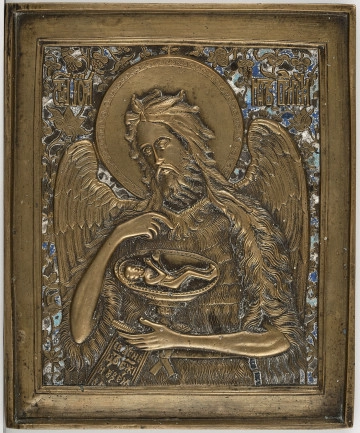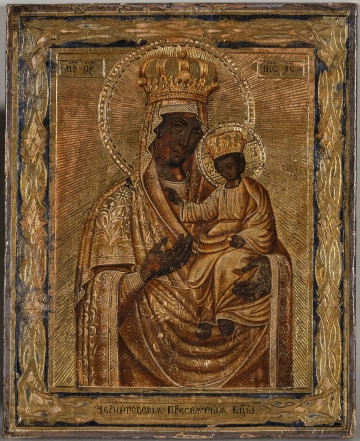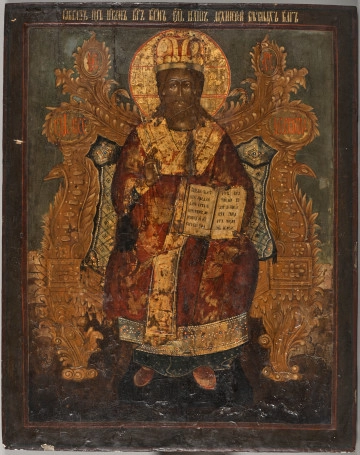
St. John the Baptist
20th century
Castle Museum in Łańcut
Part of the collection: Ikony
The presented icon – menologium is a calendar of the liturgical year. In the centre of the composition the scene of the Christ’s Resurrection and Descent into the Abyss depicts the feast of the Resurrection of Christ, around whom are grouped in four rows scenes depicting the other major liturgical feasts, see S.12766MŁ, S.12823MŁ, S.12948MŁ. The Greek term ‘menologion’ or the Latin term ‘menologium’, derived from the equivalent of month, was used to describe books containing a collection of short accounts of the lives of saints, homilies, and apocryphal stories not included in the Gospels, arranged in months. Menologium is also an icon presenting saints and feasts in calendar order. The tradition of making such books and icons dates back to the times of Byzantium. It is then that the sense of harmony and completeness of the universe created by God was associated with the need to order all aspects of human life. From this conviction arose the need to follow established patterns – canons defining the order of the Christian state and its associated religion. This principle was also applied to sacred art, which remained in close connection with the liturgy. The programme of the temple, symbolising the perfect universe, was complemented by paintings and mosaics, and since the multi-zone altar partition was created in Russia, also by icons in the iconostasis. They constituted a kind of calendar of the liturgical cycle, distributed strictly according to the programme in force in the Eastern Christianity, finally established in the 9th century after the end of the iconoclasm (a period of destruction and persecution of sacred images). On a small scale, the equivalent of the above order were calendar icons which were read like books. They depicted the patron saints of each day and the corresponding feasts of the month or the order of the most important feasts of the liturgical year, as on the presented icon. Teresa Bagińska-Żurawska https://orcid.org/0000-0002-9243-3967
Dimensions
height: 31 cm, width: 26.5 cm
Object type
Icons
Technique
gilding, tempera
Material
silver, tempera, wood
Origin / acquisition method
decyzja administracyjna
Creation time / dating
Creation / finding place
Owner
Castle Museum in Łańcut
Identification number
Location / status

20th century
Castle Museum in Łańcut

19th (?) century
Castle Museum in Łańcut

1800 — 1850
Castle Museum in Łańcut
DISCOVER this TOPIC
Castle Museum in Łańcut
DISCOVER this PATH
Educational path